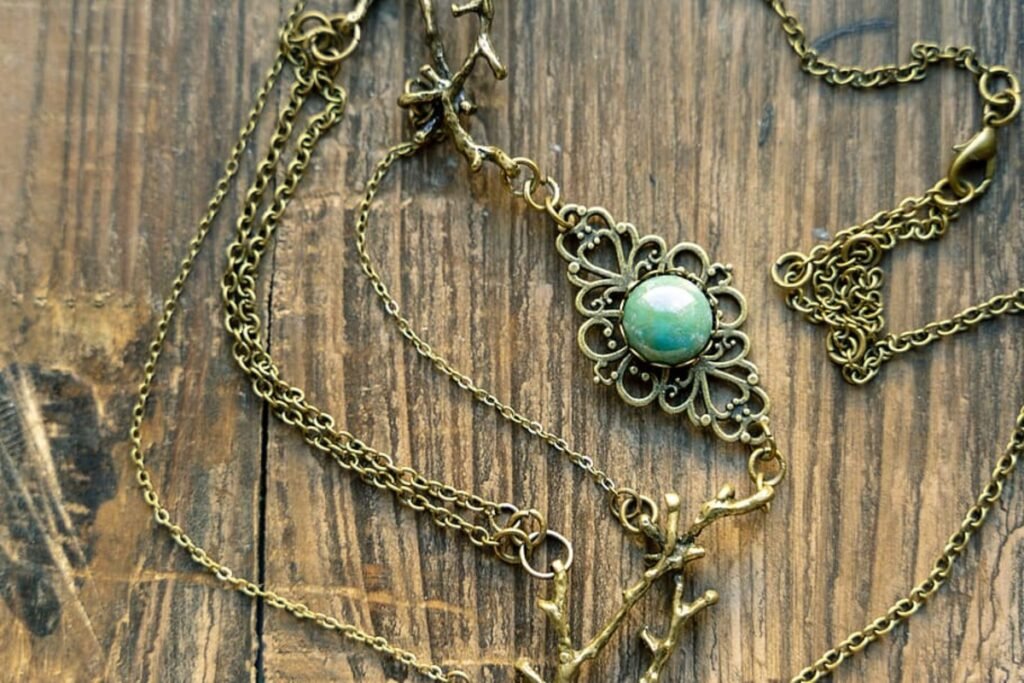Would you like to keep your jewelry looking as fresh as the day you bought it? Everybody wants that for sure, but jewelry owners know that it isn’t an easy feat to accomplish. Like most things, gold bracelets, silver necklaces, and diamond rings are subject to wear and tear through usage. It hurts, but it’s true–no matter how much you take care of your prized embellishments, their luster is bound to diminish over time. And their natural enemy: tarnishing. Why oh why does jewelry tarnish?
In this article, we’ll be discussing everything there is to know about tarnishing. From the factors that contribute to its quick progression to how you can prevent it, we’ve got you all covered. In this comprehensive guide, you’ll find valuable information that’ll help you preserve the beauty of your favorite jewelry for a long time.
What is Tarnish on Jewelry?
Many of you have experienced this: you take off your favorite ring, only to find that it has left an unsightly green or gray residue on your finger. While a quick washing of hands will do the job of removing it, having a case of green fingers can be quite annoying–and sometimes, even embarrassing–especially when you’re out on a date. So what is it exactly, and why does it happen?
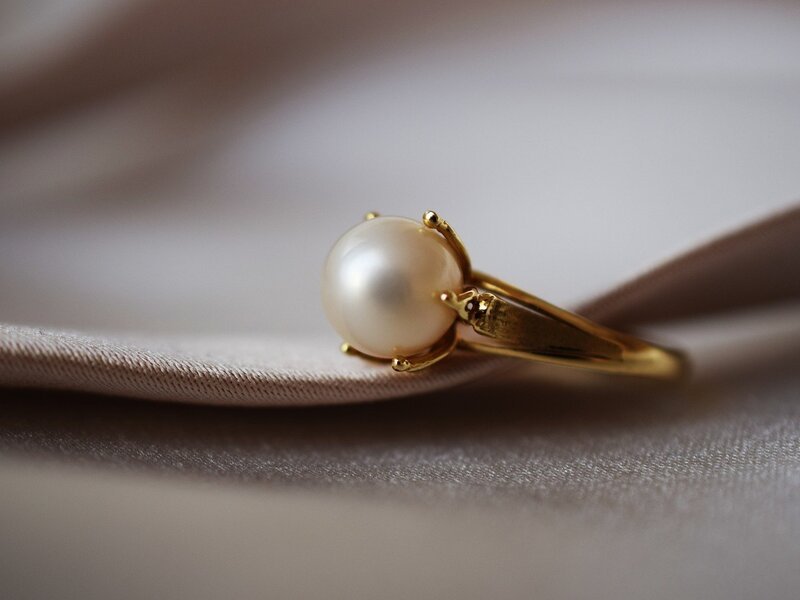
It’s tarnish – a fine layer of corrosion on metals that appears as a dull gray or black discoloration on the coating of jewelry. The metals mixed with jewelry react to moisture, air, or the chemical compounds it’s exposed to, causing the discoloration. Surprisingly, tarnish protects the inner layers of the metal, only reacting with the outer layers.
Environmental factors such as pollution and humidity can also play a part in tarnishing jewelry. Depending on which metals you have in your jewelry, some pieces can be more sensitive to natural elements than others. For example, some jewelry undergo oxidation when exposed to oxygen. Yes, even the air we breathe can cause them to tarnish, and needless to say, that’s quite a challenge to avoid. If your jewelry has copper, it would certainly react to things such as saltwater, citrus fruits, and even sulfur.
Does Gold Tarnish?
In their purest form, precious metals like gold and silver are already beautiful on their own. Their allure is incomparable, which is why so many people admire their appearance. But no matter how stunning they look, they wouldn’t hold up as functional jewelry. Pure gold and silver are extremely malleable and soft, and wouldn’t survive the wear and tear brought about by daily usage.
So, to create a stronger material for jewelry, gold and silver are often mixed with other lesser metals for added durability. Most gold in jewelry is alloyed with copper, silver, and a little zinc to produce various shades of yellow gold. A combination of nickel, copper, and zinc are used to make white gold, while rose gold jewelry’s blushing pink hue is from a combination of yellow gold and copper.
Pure gold is not prone to much tarnishing under normal conditions; it’s one of the least chemically reactive elements. It’s not affected by oxygen and sulfur, although halogens and solutions containing chlorine will surely have an effect on it. But, when mixed with other metals meant to make gold jewelry stronger and longer-lasting, it will most likely tarnish. Although they cause jewelry to darken, having these extra metals in our accessories is necessary. After all, we’d much rather have a discolored bracelet, which is easily fixable than one that is vulnerable and will cost money to repair.
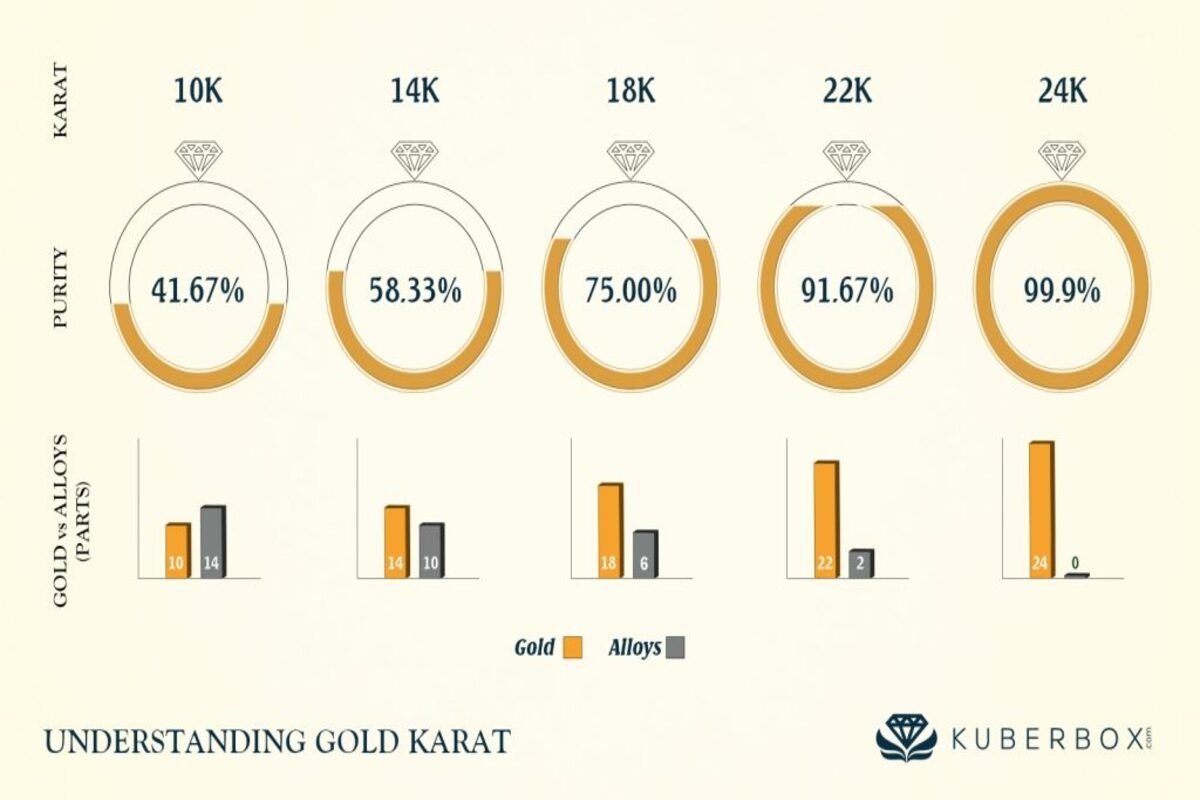
Why Does My Jewelry Tarnish So Quickly?
How quick your jewelry tarnishes will depend on a variety of factors. Below, we’ve listed the most common activities and elements related to why your jewelry might be tarnishing a lot faster than normal.
Habits
If you often wash the dishes, clean the bathroom, prepare meals, or take a swim while wearing jewelry, then you’re exposing it to substances that may cause its surface to react and darken.
Cosmetic products
Beauty products such as lotion, hair spray, perfume, and nail polish remover can also cause jewelry to discolor. Even hand sanitizer can tarnish metals because of its high alcohol content, according to an article from Vogue.
Body chemistry
Some people might ask: why does my skin tarnish jewelry? Body chemistry is one of the trickier factors to identify and control, as every person’s pH balance is different. Your jewelry is at a higher risk of tarnishing if you enjoy drinking and eating acidic foods, such as wine, coffee, fruit juices, tomatoes, oranges, vinegar, pickles, etc. Prescription drugs like anti-depressants, some antibiotics, and even multivitamins can alter an individual’s body chemistry. Menopausal women also undergo hormonal changes and body adjustments that can cause jewelry to oxidize quicker.
Cleaning products and chemicals
Metals in jewelry will likely react if it has direct contact with strong chemicals, such as bleach, ammonia, acid, alcohol, chlorine, etc.
Skin moisture
An individual’s metabolic or physiological state can cause the body to produce excess moisture and sweat, even without physical activity. Moist skin can significantly influence how quick jewelry tarnishes.
How to Clean Tarnished Jewelry
We know–it’s frustrating knowing that there are so many things that can reduce the luster of your beloved jewelry. Thankfully, removing tarnish from gold and silver is simple. Here are the most effective products you can use when cleaning your jewelry.
Silver
The best way to clean tarnished silver jewelry and keep them from discoloring as quickly is by treating them with silver polish. Good Housekeeping recommends Weiman’s Silver Polish, which boasts of ingredients that dissolve and eliminate tarnish while giving your silver a protective coating that will prevent it from re-tarnishing. But if you’re in a hurry and concerned about making a mess while cleaning, then Weiman’s Silver Wipes is the more convenient alternative.
If you’re more of the do-it-yourself type, then there are also a few homemade solutions that you can utilize. Keep in mind, however, that choosing this route won’t keep tarnish from returning. Silver experts also warn against using these methods too often. You must only resort to these measures when there’s no silver polish around and when you really need to clean your tarnished jewelry.
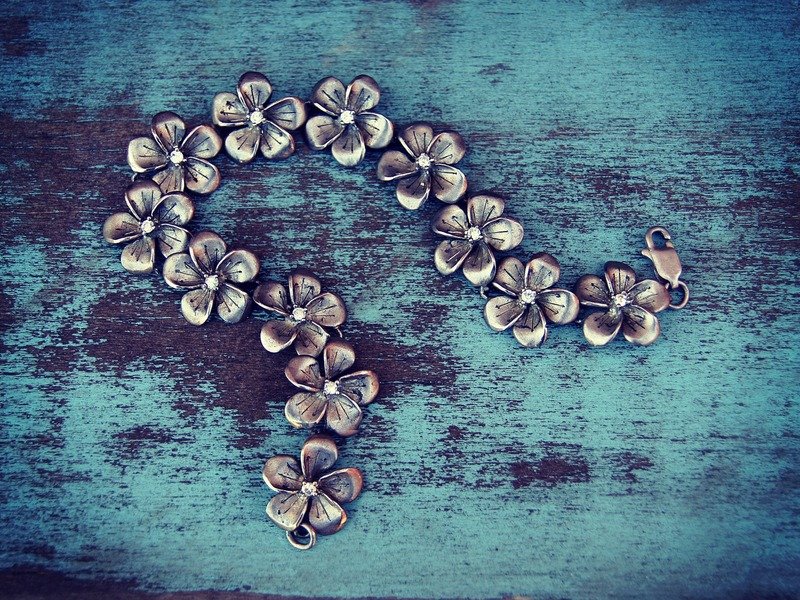
Dish soap
Mix a few drops of dish soap with warm water. Dip a soft cloth into the mixture and use it to gently wipe the surface of your silver jewelry. Rinse with cold water and dry it off with another soft cloth.
Toothpaste
Toothpaste not only works wonders for our teeth, but it also removes stains from our jewelry. Apply a dab of white toothpaste (not gel) to tarnished silver and rub very gently using your finger or a soft cloth. Rinse with warm water and dry it off with another soft cloth.
Baking soda
For severely tarnished jewelry, mix three parts baking soda to one part water. Wet the silver and apply the paste with a soft, lint-free cloth. Rinse thoroughly and buff dry.
Gold
Give your tarnished gold bracelets, necklaces, and earrings a gentle bath in a solution of three to four drops of mild liquid dish soap and a little warm water. Let them soak for five minutes. Swish the pieces around then remove them from the solution. Place them on a soft cloth and use a soft baby toothbrush to clean the gold. Make sure you rub gently and in straight lines. Rubbing in a circular motion can cause patters to show up on the surface, so avoid doing that. Rinse them under running water and buff dry with a soft cloth.
How Do You Clean Tarnished Fake Jewelry?
Let’s be honest–we all own a few pieces of fake jewelry, and there should be no shame in it. After all, these costume accessories also make us look fabulous and allow us to express our personal style without breaking the bank. It goes without saying that they deserve as much TLC as our fine jewelry. Sadly, cheap jewelry tarnish easily. That’s because the thin silver or gold plating on fake pieces wear off quickly, revealing the brass or nickel underneath. But fret not, cleaning tarnished costume jewelry is relatively easy and requires only a few household items.
Much like fine jewelry, Real Simple recommends cleaning fake jewelry with simple solutions. You can try soaking them in warm water mixed with a few drops of mild liquid soap. A bit of lemon juice will also work wonders in removing tarnish in jewelry. Another useful ingredient is white vinegar; not only will it clean your costume jewelry, but it will also give it a high shine.
You need to be extra careful if your jewelry has gemstones in it. Make sure that the water isn’t too warm and that you don’t soak them for too long, as doing so could loosen the glue used to keep them in place.
Use only a soft baby toothbrush to scrub away any dirt or residue from your costume jewelry. Q-tips are also effective in removing grime from in between gems. No matter what ingredient you use, don’t forget to rinse them thoroughly afterward and pat them dry with a soft clean cloth.
How to Keep Jewelry From Tarnishing
Unfortunately, some factors that cause jewelry tarnishing are already out of your control, such as your body chemistry and moisture. But the good news is that it’s still possible to preserve the beauty of your silver and gold jewels for a long time if you do a great job of taking care of them. Here are some ways on how to keep your precious ornaments from darkening.
Store it properly
Simple things like moisture in the air and heat from the sun can impact the appearance of your jewelry, so you must keep it in a cool, dry place whenever it’s not in use. If you have velvet bags, you can store your diamond rings and gold bangles there individually to protect them from scratches and possible breakage.
You can take it up a notch by storing your jewels in Ziploc bags. Just make sure that you remove as much air as possible out of the plastic pouch before sealing it. With this, you’re confident that the metals won’t oxidize from the air. But if you want to be absolutely sure that your jewelry stays in tip-top shape, then purchasing 3M anti-tarnish strips can do the trick. This ultra-absorbent paper’s job is to take out all of the elements in the atmosphere that will cause your jewelry to tarnish. Just put one in the places where you store your accessories.
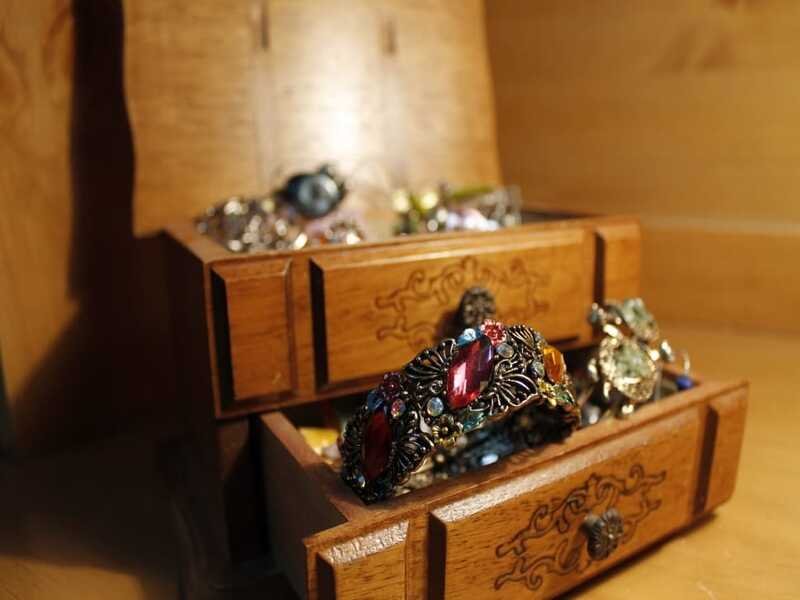
Jewelry protectant spray
If you want to equip your jewelry with a shield that can protect it from the elements that can cause tarnishing, then you should definitely buy this product. Not only does it protect your beloved jewelry, but it can also protect your skin from allergies that people with sensitive skin get from costume pieces. Make sure that you choose the 100% hypoallergenic variant so that you get the best value for your money.
Keep it away from liquids
If your jewelry is constantly exposed to moisture and liquids, then it will inevitably tarnish much quicker than usual. Keep it away from the harsh liquids mentioned above so you can maintain its natural luster much longer. If you get your jewels wet by accident, wipe and dry them off right away to lessen the liquid’s damaging effect.
Give it a rest
This tip might seem like a no-brainer, but some people love their jewelry so much that they tend to wear it all day every day, no matter where they’re going or what they’re doing. We get it–your favorite piece of jewelry is a part of you, and you might feel naked without it. But if you want to keep it sparkling for a long time, then you must know how to give it a rest.
What Jewelry Does Not Tarnish?
If you’ve grown tired of cleaning tarnished jewelry over the years, then opting for non-tarnish ones is the only way to go. Depending on the metal used, some of them can either be affordable or expensive. Here, we list a few of the metals used in making jewelry that won’t oxidize.
Platinum
Platinum is gaining popularity in the jewelry industry due to its attractive silvery-white hue. Plus, it doesn’t react to water or oxygen in the air, so it won’t lose its natural sheen and tarnish. Now that more people realize the pros of owning platinum jewelry, it’s has become one of the preferred materials for wedding bands and engagement rings.
Stainless Steel
It’s one of the most common metals used in making appliances, but over the years, it has earned its place in the world of jewelry. Stainless steel isn’t pure metal; it’s an alloy composed of at least 10% chromium. Its silvery-white and mirror-like finish make it easy to clean, plus, it’s also scratch and corrosion-resistant.
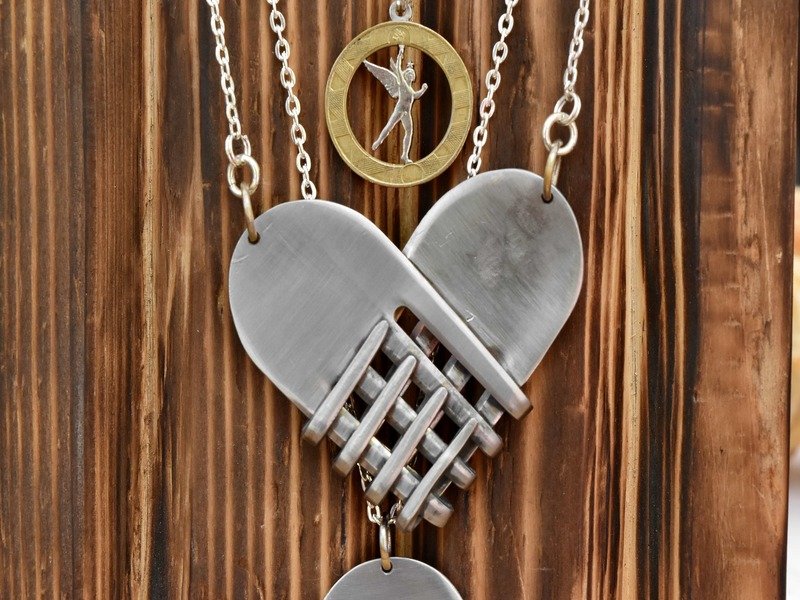
Titanium
It’s the world’s hardest natural metal, but also the most lightweight material used in the manufacture of jewelry. This silvery-white metal is also very strong and is one of the best materials to use for making wedding bands. However, its biggest disadvantage is that it’s not resistant to scratching.
Tungsten Carbide
This metal is an alloy of 80% tungsten and 20% carbon. Its beautiful white or gray finish has become a popular choice for men because its shade gives off a strongly masculine vibe. It’s highly durable and 4x harder than titanium.
Conclusion
Knowing how to properly care for your jewelry is still the best way to keep them gorgeous and sparkling for a long time. To prevent your jewels from discoloring quickly, make sure to keep them from coming in contact with harsh liquids and even water. Storing them in a jewelry box to protect them from oxygen and sun exposure will also do wonders in maintaining their quality.
We hope that we’ve answered your questions about why does jewelry tarnish through this comprehensive guide. If you’d like to learn about the techniques involved and the materials used in making jewelry, we’ve also created a detailed blog post on that topic.
